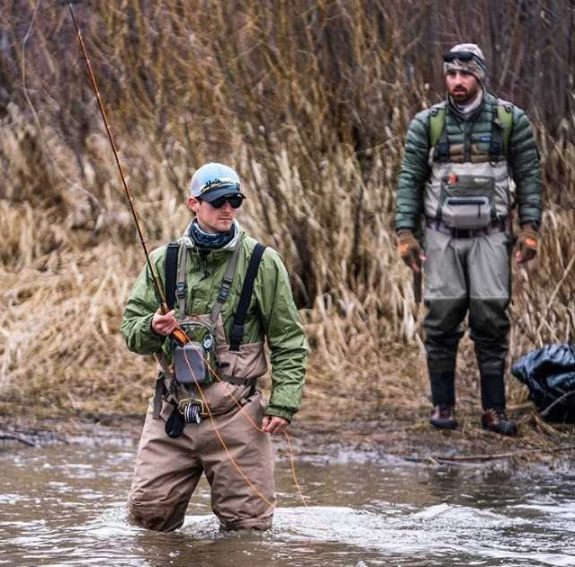Editor’s note:
Building off the success of last year’s Native Odyssey campaign, Trout Unlimited is sending four of our brightest college club leaders in the TU Costa 5 Rivers Program to explore the home of the world’s largest runs of wild salmon: Alaska. Starting July 5, these students will explore the Kenai Peninsula, Bristol Bay and the Tongass National Forest in pursuit of the five species of Pacific salmon and other native Salmonids that call Alaska home. In partnership with Costa Sunglasses, Simms Fishing Products, the U.S. Forest Service, Fishpond USA, and Orvis, these students will seek to unearth, document, and share the challenges facing the largest salmon fisheries in the world.
Growing up in the Midwest led to some great outdoor opportunities and forged my lifelong appreciation for nature, imbued with a passion for water.
Being a lover of skiing and snowboarding, catching frogs, kayaking and fishing made devoting my time to the study of water a seamless decision. I’m now a senior Environmental Science student with an emphasis in Hydrology and Water Management attending Metropolitan State University of Denver in colorful Colorado.
My Trout Unlimited journey was sparked by curiosity and has been supported by like-minded teachers and compatriots along the way. The organization is a wonderful network and an asset to conservationists operating locally with an impact on how society views this wonderful world.
When first starting out on this conservationist journey, excellent guidance was received from the faculty of the Earth and Atmospheric Service Department at Metro. Among the many lessons, three field trips stood out. The first trip, led by Dr. Ashley Rust, covered everything from electro fishing, entomology and hydrology. The second was a trip led by Dr. Michael Freiheiter in Rocky Mountain National Park, where students apply the skills they’ve learned over the semester via hunting for coordinate locations throughout the park. The final trip was led by Dr. Randi Brazeau took us on to the Binney Water Treatment Facility in Aurora, Colo.. The facility uses rainbow trout to act as an indicator for water quality along their water treatment train. It releases treated water through a tank of rainbows and monitors the fish, understanding the fish are clear indicators of water quality.
These trips were inspiring and were incredibly impactful. Recently, I was given an opportunity to serve an internship at Denver Trout Unlimited. This experience was incredible, and grew my knowledge of the relationships non-profits, private industry and government agencies have around water management. Soon after, I became a board member of Denver Trout Unlimited, a role I gratefully carry today.
We wanted to bring the fly-fishing and conservation network of Trout Unlimited to the Metro campus so we formed the MSU Denver Fly Fishing club (a TU Costa 5 Rivers club). With the blessing of Andrew Loffredo, leader of the 5 Rivers program, and the university, we formed the club. Currently I work as treasurer.
This endeavor has been well worth it and national events such as the Rendezvous trips have been an educational blast. In addition to my participation in Trout Unlimited, I volunteer at The One World, One Water Denver Botanic Gardens Center operated by Tom Cech and Jenifer Riley-Chetwynd, who have been a tremendous resource in my water pursuits.
Throughout my college career I’ve also volunteered and competed in competitions hosted by the Greenway Foundation. In particular, their Water Connection branch, and I am thankful for the experiences. It is an absolute honor to be selected to attend the Native Odyssey with the TU Costa 5 Rivers Program. These areas, such as Tongass National Forest and Bristol Bay, cannot be replicated anywhere else in the world.
These areas are snapshots of an ever-changing library of time and organisms that have inhabited them for millennia. This year’s 5 Rivers Odyssey team aims to communicate the challenges facing these ecosystems, while exploring and documenting the Alaskan wilderness.
— Mac Kessler



